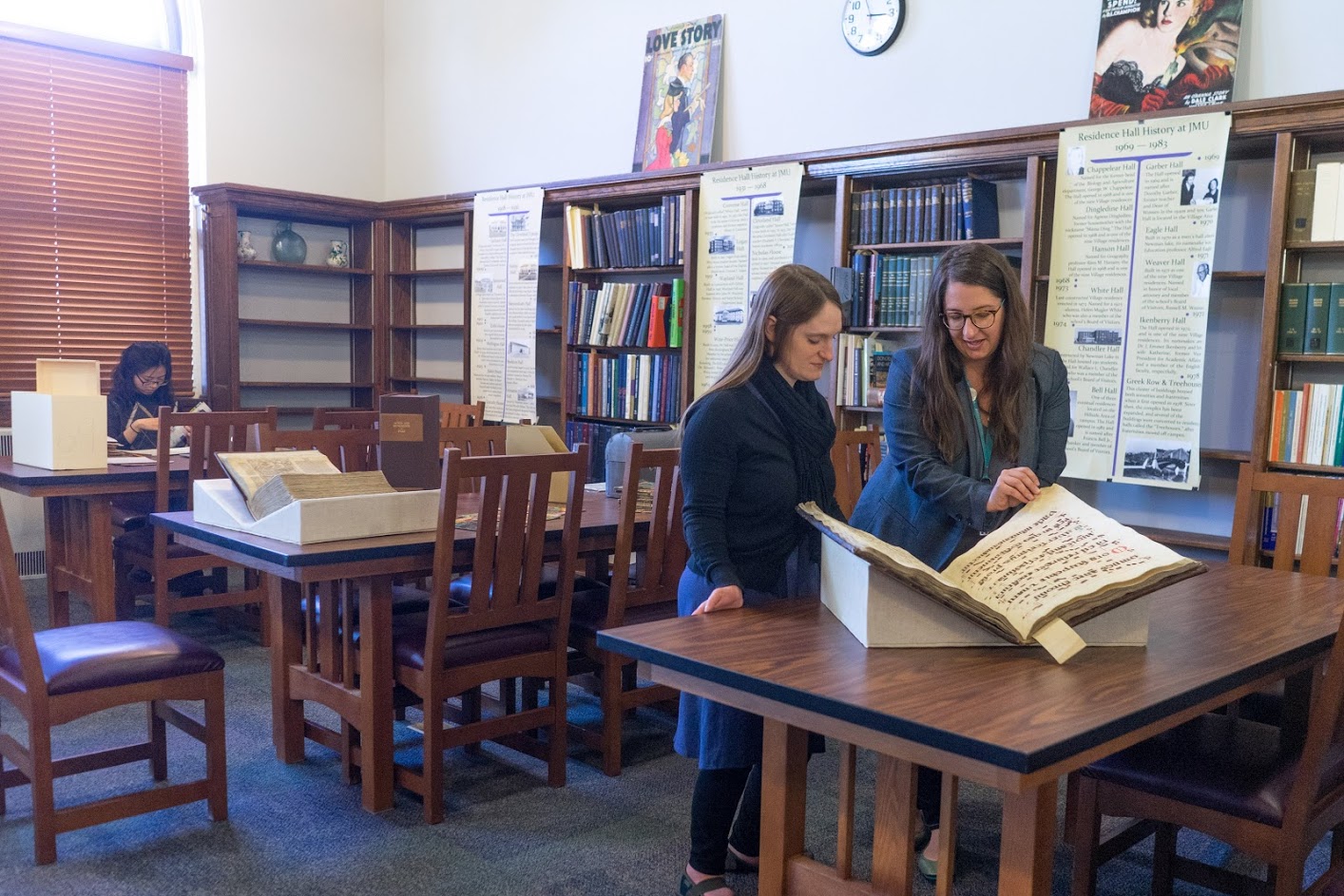
Writing an image description can be daunting if you have never done it before. There are many ways to write an image description/alternative text, but at ODS, we encourage you to aim for these three goals: be complete, be concise, and consider context.
Let’s begin with the following image and use the 3C's to consider whether its associated alt-text is effective.

Draft Alt-Text: “Two women, one with long brown hair wearing a blazer, and the other with long brunette hair wearing a blue scarf, read a book”
The three C’s of image description:
- Concise
Generally, an image description or alternative text uses concise language and does not describe visual elements that are not important to the overall understanding of the image. In our original alt-text example, descriptors about what the two women are wearing or about their hair colors do not add any significant understanding to the meaning behind the image. Further, adding such descriptors further delays the user from receiving the most important information: that the two women are reading a book. A step in the right direction would be to delete these components, leaving us with:
“Two women read a book”
Note that that some would omit gender and use the word "people" instead of "women." Also note that alt-text applied to online images must never be longer than 100 characters. For more complicated images such as charts and diagrams, consider using extended alt-text methods such as linking to a separate page with the full image description or typing the full description directly after the image.
- Complete
Good alt-text describes important visual information as completely as possible. “Two women read a book” does not indicate that the two women are looking at an unusually large and likely important book that is handled with care and propped up on wedges. Adding this content makes the alt-text more complete:
“Two women read a large, old book propped up on wedges.”
- Contextual
Good alt-text changes based on the context in which an image is presented. Let’s assume that this image is featured on two websites: the “JMU Special Collections” homepage and in an article titled “ The Use of Protective Equipment in Document Archives.” In the former case, the image description “Two women read a large, old book propped up on wedges,” would likely suffice. In the latter case, if the author has been weighing the pros and cons of utilizing gloves in the effort to preserve documents, it would be important to note in the alternative text of this image that the pictured individuals are not using gloves:
“Two women read a large, old book propped up on wedges, one turning a page without gloves.”
There is no single correct way to write alternative text for an image. Some choose to be as succinct and objective as possible while others choose to be more illustrative. Regardless of what you write, remember that any good-faith effort in applying alternative text to an online image is better than no image description at all!
To jump to a specific platform, click from one of the links below:
- Alt-Text in Cascade
- Alt-Text in Canvas
- Alt-Text in Word
- Alt-Text in PowerPoint
- Alt-Text in Facebook
- Alt-Text in Instagram
- Alt-Text in QuestionPro
- Alt-Text in HTML
Return to Keep Choosing Accessible Learning Materials homepage
